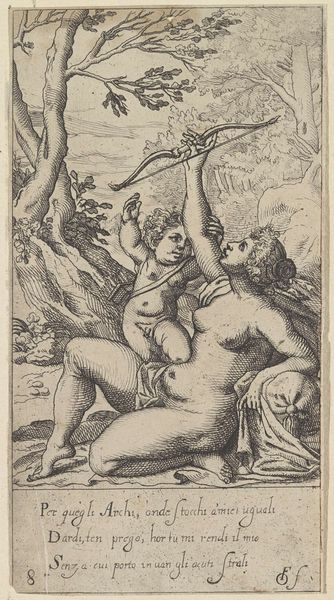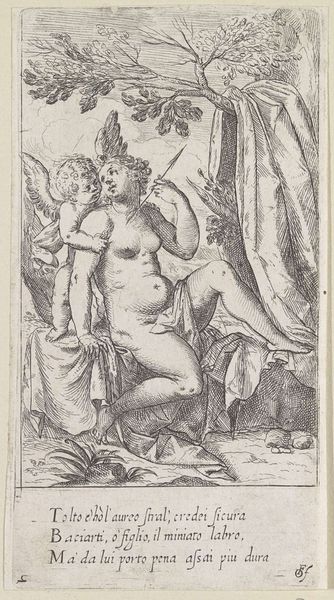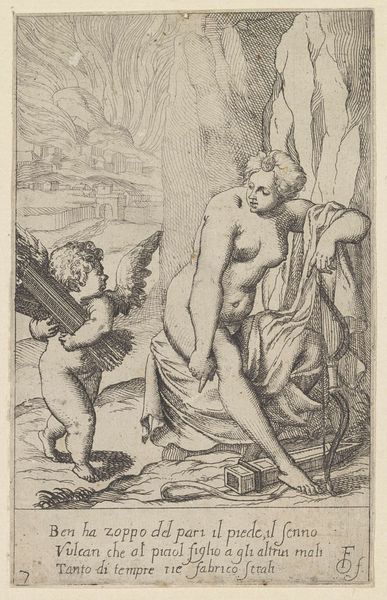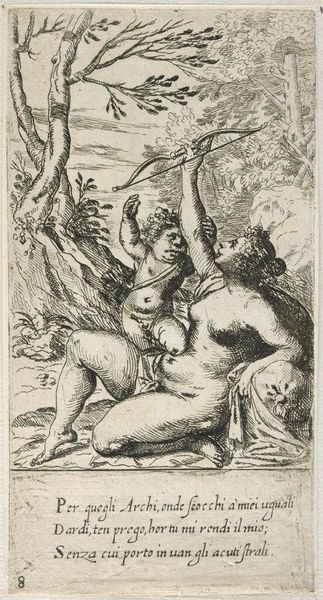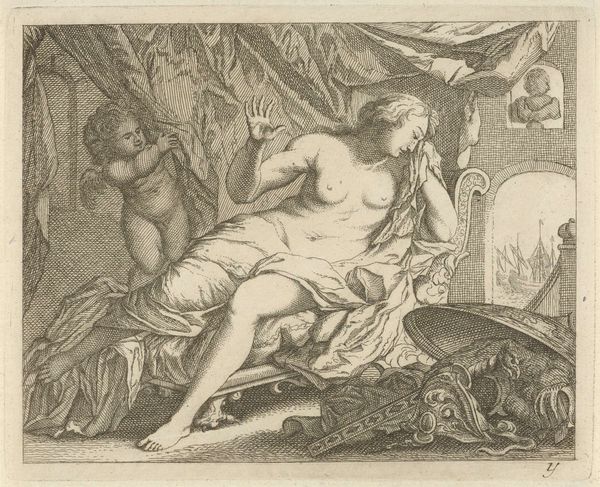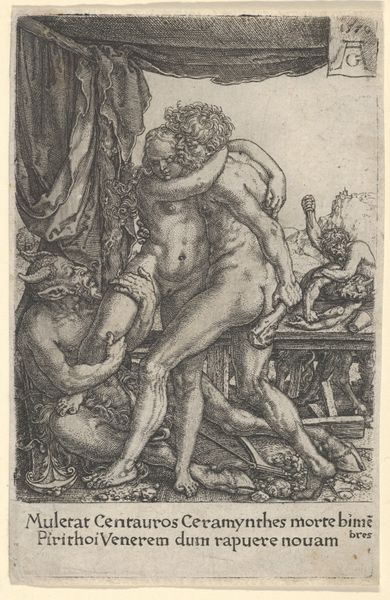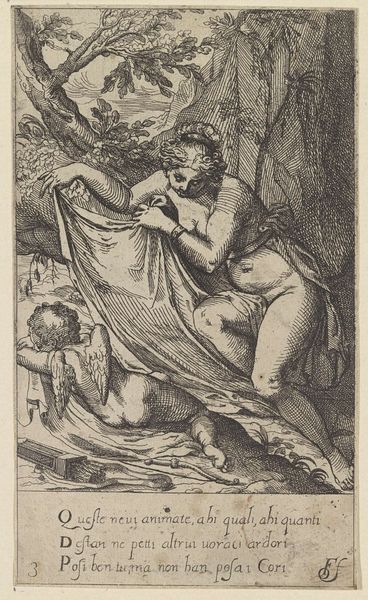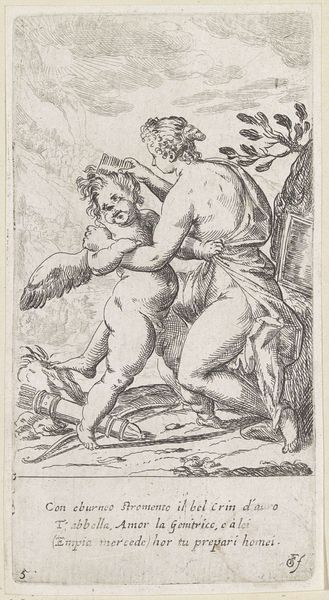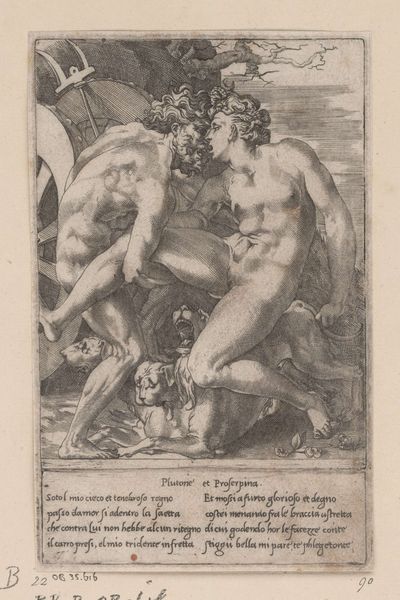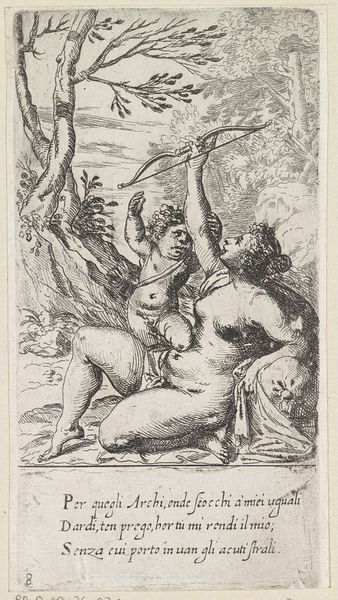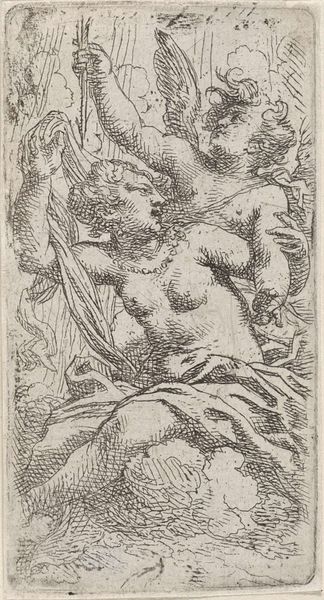
print, engraving
#
allegory
#
baroque
# print
#
figuration
#
nude
#
engraving
#
erotic-art
Dimensions: height 160 mm, width 86 mm
Copyright: Rijks Museum: Open Domain
Editor: This print, titled "Venus en Amor," dates from after 1617. It's currently housed in the Rijksmuseum and the museum attributes it to anonymous authorship. The engraving portrays Venus with Cupid, but I'm struck by the detailed, almost labored quality of the lines. It seems less about ideal beauty and more about the craft of reproduction. What's your take on this engraving? Curator: Well, let's consider the labor involved in producing a print like this. Each line meticulously etched, likely multiplied across numerous impressions. This transforms Venus, traditionally a symbol of ethereal beauty, into a commodity produced through skilled labor and disseminated widely. Editor: That’s a fascinating perspective! It almost demystifies the subject matter, drawing attention to the process rather than just the final image. Do you think the erotic subject matter plays into that? Curator: Precisely. The very act of mass-producing a traditionally “high art” subject like a nude allegory makes it more accessible, thus altering its cultural value. Think about who would own these prints: artisans, merchants. They’re not necessarily commissioning huge paintings, but participating in visual culture through printed images like this. It reflects changing consumption patterns of the era. Editor: I never considered that! It feels like it moves the conversation from aesthetics to how the art itself was consumed and what sort of new audience that brought to visual culture. Curator: Exactly! By examining the materials and methods of its production, we get a glimpse into the socio-economic forces at play, which shift our understanding from simply admiring Venus to recognizing how labor and accessibility shape our engagement with art. Editor: It completely changes how I see prints from this period. I'll be thinking more about production costs than aesthetic perfection moving forward. Thanks! Curator: My pleasure. Remember to keep asking those questions about how art is made and by whom. The answers are always illuminating.
Comments
No comments
Be the first to comment and join the conversation on the ultimate creative platform.
